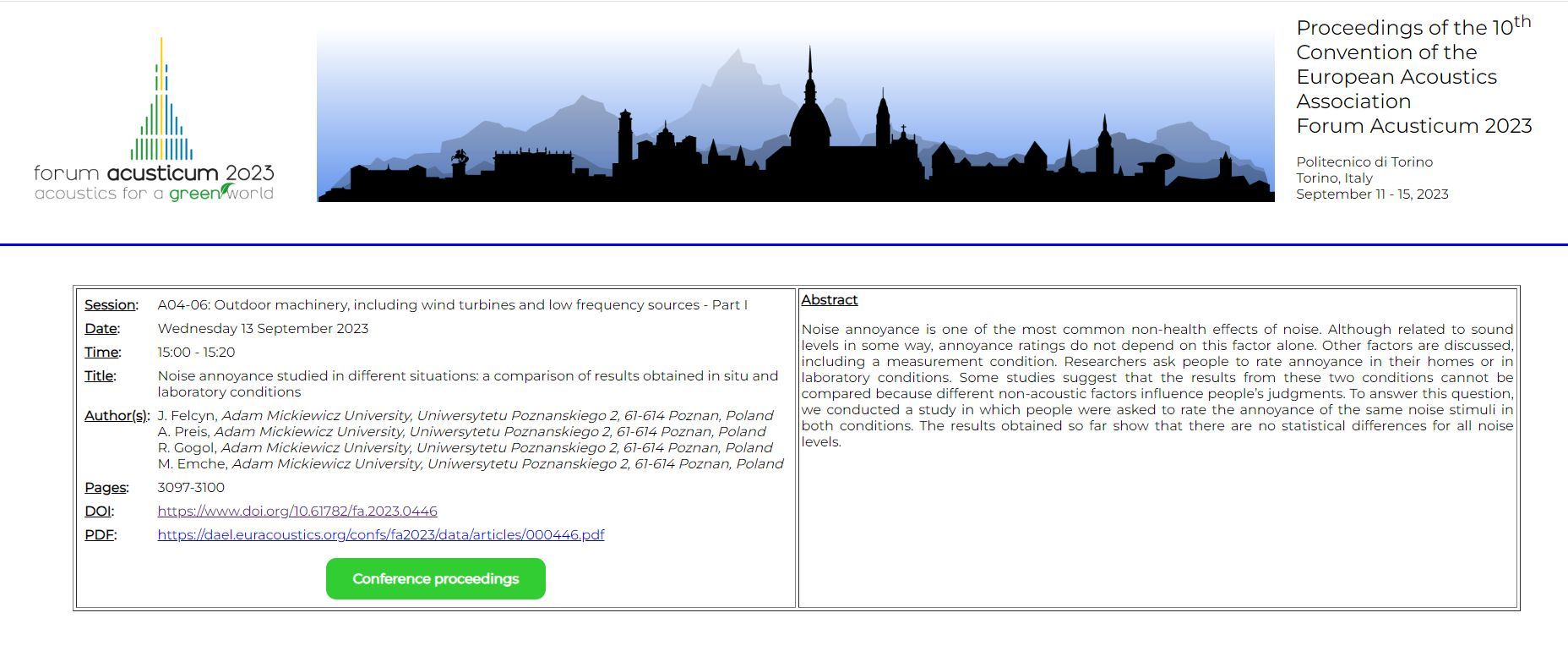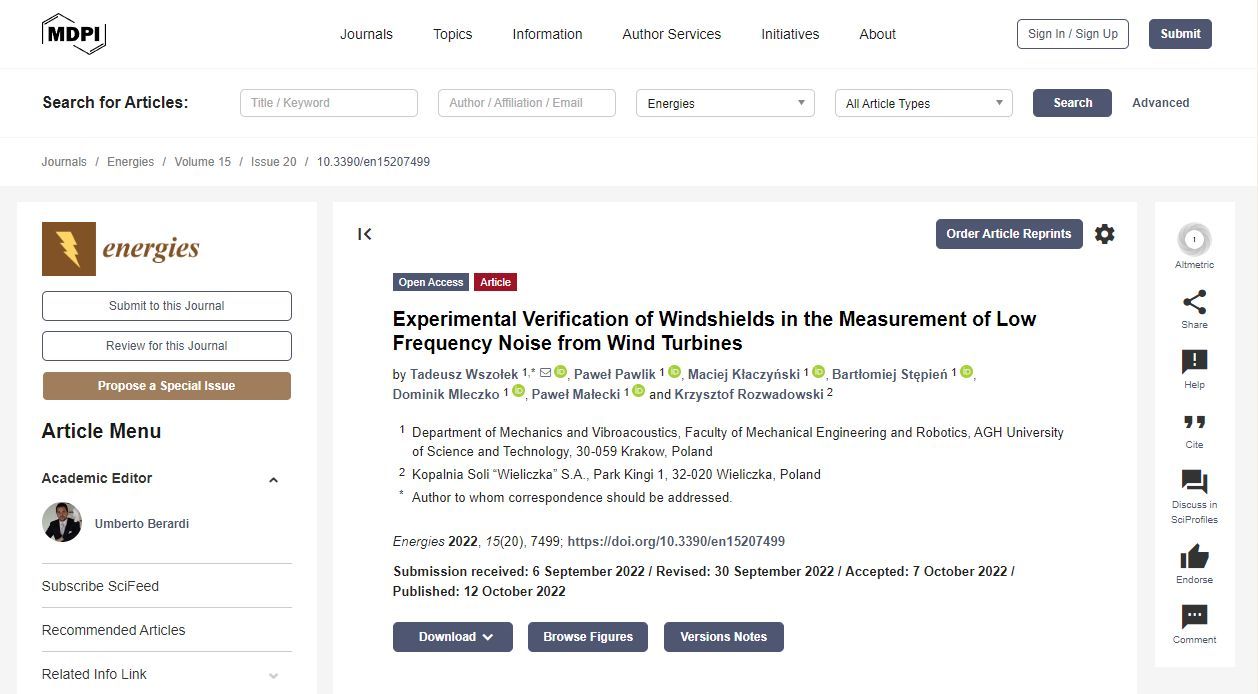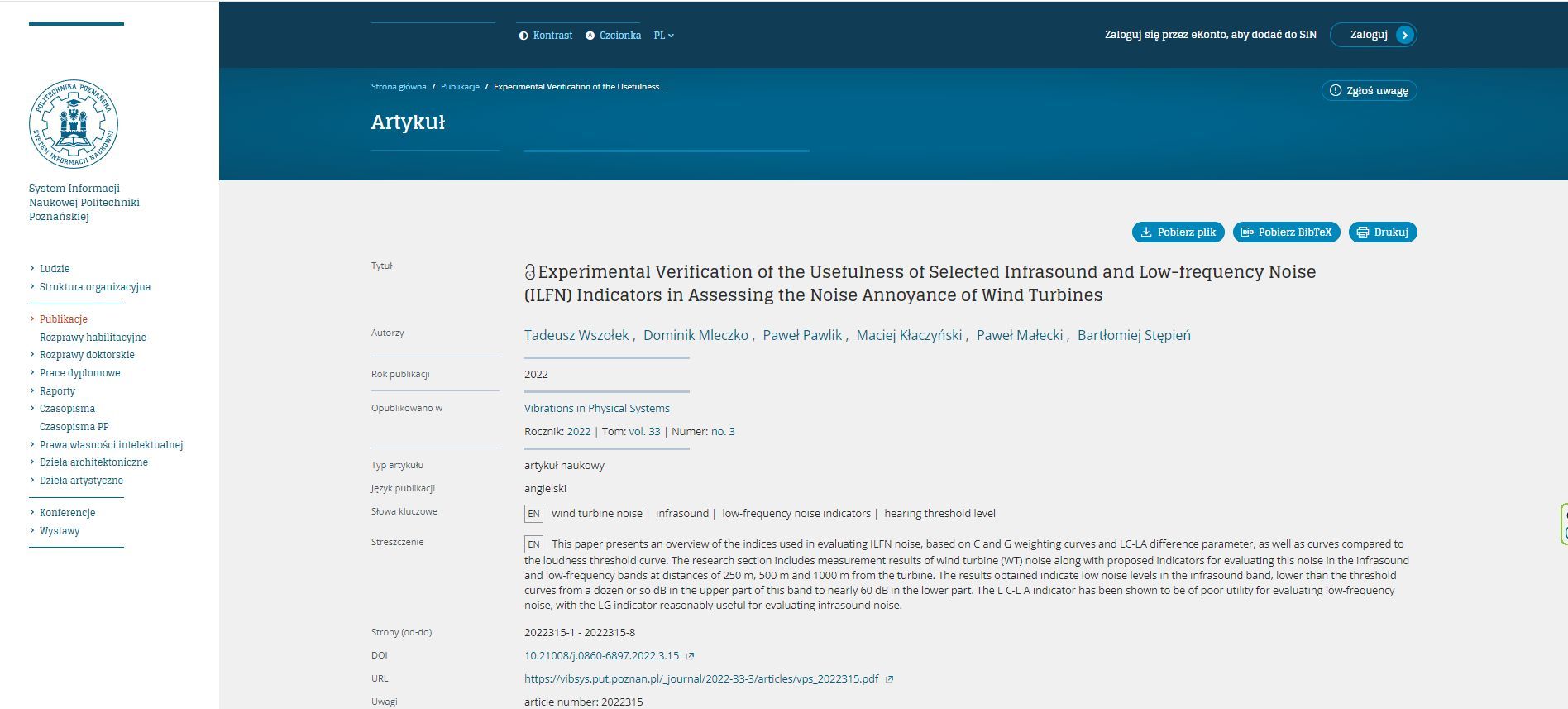13- On-line wind farm noise control
The results of wind turbines (WTs) noise calculations, calibrated with the outcomes of multi point continuous noise monitoring around the wind farm (WF) are presented in the paper. The Nord2000 noise calculation method was used to obtain contours of LAeq, taking into account instantaneous WTs parameters, its horizontal directivity and meteorological conditions . Noise contours of LAeq around a single WT are not symmetrical due to wind direction and directivity of WT. This is why sound levels in the noise protected (residential) areas around WF are not always the same. Usually, LAeq may be reduced by a few decibels by switching WT into noise reduced mode. Using an on-line -real time calibrated – calculation model this can be applied only to a selected WT influencing sound levels at a given area where current conditions might cause noise complaints (while the other WTs can operate in a normal mode). There are factors that increase the probability of noise complaints, such as amplitude modulation, as well as decrease this probability, such as masking effect of wind induced noise or high ambient noise which should also be taken into account while setting the current operation mode of individual WTs.







